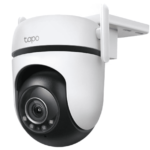
Teaching New Normals in Education
How to refresh your teaching philosophy for the new normal? The pandemic has disrupted traditional learning and forced educators to adapt to new methods and technologies. Teachers and students have had to adjust to new ways of instruction and understanding, such as online, hybrid, or blended formats while facing the uncertainties and difficulties of the health crisis. In this context, teachers should revisit and refresh their teaching philosophy, a statement of their beliefs and values about teaching and learning.
A teaching philosophy is more than just a static document you write once and forget. It is a living reflection of your identity, goals, and practices as an educator. It can help you articulate your vision, guide your decisions, and communicate your strengths. Also, it can help you cope with the challenges and opportunities of the new normal by providing a framework for evaluating and improving your teaching effectiveness. But how do you refresh your teaching philosophy for the new normal? Below are some steps you can follow:

Review your current teaching philosophy.
Start by reading your current teaching philosophy statement if you have one. If you don’t have one, you can write a draft based on some common elements, such as:
- Concept of learning. What does it mean for a person to learn or master a concept? Also, what is an ideal learning situation?
- Your concept of teaching. Moreover, what are your educational values and aspirations? What is your role as a teacher? Besides, what are some ideal teaching scenarios?
- Student goals. What are the desired learning outcomes for your students? How about the improvements you hope to see in them?
- Teaching methods and strategies. How do you achieve your student goals? What methods or techniques do you use or prefer? How do they align with your concepts of teaching and learning?
- Your teacher-student interactions. What is the ideal dynamic between you and your students? How do you foster rapport, engagement, feedback, and collaboration?
- Assessment. How do you measure student learning and improvement? What types of assessment do you use or favor? How do they reflect your educational values and goals?
- Your professional development. What are your personal and professional goals as an educator? How do you keep up with the latest trends or research in your field? Also, how do you evaluate your growth and development?
You can use these questions as prompts to write a one- or two-page narrative that conveys your core ideas about teaching and learning.

Reflect on your recent experiences.
Next, think about how the pandemic has affected your teaching and learning experiences in the past years. Consider the following questions:
- How did you adapt to the new modes of teaching and learning, such as online, hybrid, or blended formats? What challenges did you face? How about the opportunities did you discover?
- Furthermore, how did you cope with the uncertainties and difficulties of the health crisis? How did you support your students’ well-being and resilience? Also, how did you take care of yourself?
- How did you maintain or enhance the quality of your teaching and learning in the new normal? What strategies or tools did you use or learn? Additionally, what feedback did you receive or seek?
- Aside from those, how did you collaborate with other teachers or colleagues in the new normal? How did you share best practices, resources, or ideas? Likewise, how did you learn from others?
Ask these questions as prompts to write bullet points or paragraphs describing your recent experiences.
Compare and contrast your current and recent statements.
Now that you have written your current teaching philosophy statement and recent experiences, compare and contrast them. Look for gaps, inconsistencies, or changes between what you believe and what you do. Consider the following questions:
- Does your current teaching philosophy statement still match your work in the new normal? If not, what has changed?
- Also, does your current teaching philosophy statement still reflect your identity, goals, and practices as an educator? If not, what has evolved?
- Does your current teaching philosophy statement still communicate your strengths, vision, and values as an educator? If not, what needs to be updated?
Use these questions as prompts to write bullet points or paragraphs highlighting differences or similarities between your current and recent statements.

Revise or rewrite your teaching philosophy statement.
Finally, based on comparison and contrast, revise or rewrite your teaching philosophy statement for the new normal. Edit your current one to incorporate changes or updates, or write a new one from scratch. Some tips to help you are as follows;
- Concise. Aim for one or two pages at most. Use clear and concise language. Avoid jargon or technical terms.
- Specific. Provide concrete examples of what you do or have done in the new normal to illustrate your beliefs and values. Use data or evidence to support your claims.
- Reflective. Please explain why you do what you do and how it aligns with your teaching and learning concepts. Show how you evaluate and improve your teaching effectiveness.
- Personal. Use the first-person voice and a conversational tone. Express your passion and enthusiasm for teaching and learning. Share your stories or anecdotes.
- Be professional. Proofread and edit your statement for grammar, spelling, and punctuation. Format your information neatly and consistently. Follow any guidelines or requirements if you write for a specific purpose or audience.
These tips can guide you as a checklist to revise or rewrite your teaching philosophy statement.
Conclusion
On the whole, refreshing your teaching philosophy for the new normal is a valuable exercise that can help you adapt, improve, and grow as an educator. It can also help you communicate your strengths, vision, and values to others, such as students, colleagues, or employers. Considering the steps above, you can craft a clear and concise statement that reflects your beliefs and experiences in the context of the new normal.
Remember that your teaching philosophy is not a fixed document but a living reflection of your identity, goals, and practices as an educator. You can revisit and refresh it periodically to keep it relevant and meaningful.
If you have any questions or comments on How to Refresh Your Teaching Philosophy for the New Normal, please leave them below. Thanks for reading, and I’ll see you at the next one!



